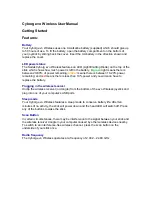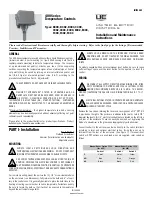
Array
Basics
A-3
RAID 4
RAID 4 is similar to RAID 3 in that the redundant information is achieved in the form
of parity data. The user data is distributed across all but one of the disks. The
controller uses a single, dedicated parity drive for data protection. The main
difference is that RAID 3 usually synchronizes writes to its disks, while RAID 4 can
send data to its disk independently.
RAID 4 is best suited for transaction processing applications that require high read
requests, but not write requests such as inquires rather than updates.
RAID 4 is not recommended for I/O intensive applications that require high data
transfer rates.
RAID 5
RAID 5 arrays contain redundant information in the form of parity data, which is
calculated block-by-block for all user data. The parity information is distributed
across the disks in the array and occupies the equivalent capacity of about one disk.
Data is interspersed with the parity information. If one disk in the array fails, the data
on the failed disk can be reconstructed from the parity data and user data on the
remaining disks. Two disks must fail before the entire array fails.
The read performance of a RAID 5 array is excellent—comparable to that of a
RAID 0 array. Write performance is lower than that of a RAID 0 array, because write
operations involve calculating and writing new parity data as well as writing the new
user data.
RAID 50
RAID 50 arrays are made up of two or more RAID 5 arrays, across which data is
striped. RAID 50 arrays contain redundant information in the form of parity data,
which is calculated block-by-block for all user data. As in a RAID 5 array, the parity
information is distributed across the disks in the array and occupies the equivalent
capacity of one disk per RAID 5. Data is interspersed with the parity information. If
one disk in the array fails, the data on the failed disk can be reconstructed from the
parity data and user data on the remaining disks. Two disks in one RAID 5 subset
must fail before the entire array fails.
The read performance of a RAID 50 array is excellent—better than a RAID 5 array—
along with better data protection. Write performance is lower than that of a RAID 0
array, because write operations involve calculating and writing new parity data as
well as writing the new user data.
Summary of Contents for G5312
Page 1: ...G and K Series External RAID Board Controller G5312 G7313 K5312 K7313 User s Guide...
Page 2: ......
Page 10: ...G and K Series User s Guide viii...
Page 24: ...G and K Series User s Guide 1 14...
Page 28: ...G and K Series User s Guide 2 4...
Page 33: ...Accessing the Disk Array Administrator Software 3 5 Figure 3 1 Menu tree...
Page 34: ...G and K Series User s Guide 3 6 Figure 3 2 Menu tree continued...
Page 80: ...G and K Series User s Guide 6 8...
Page 138: ...G and K Series User s Guide 9 14...
Page 150: ...G and K Series User s Guide G 6...
Page 159: ......
















































